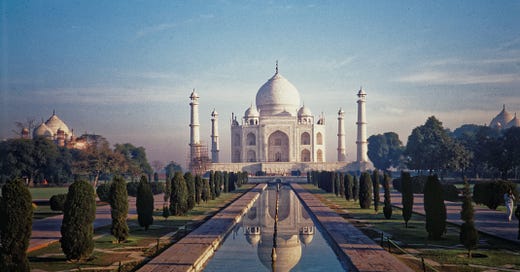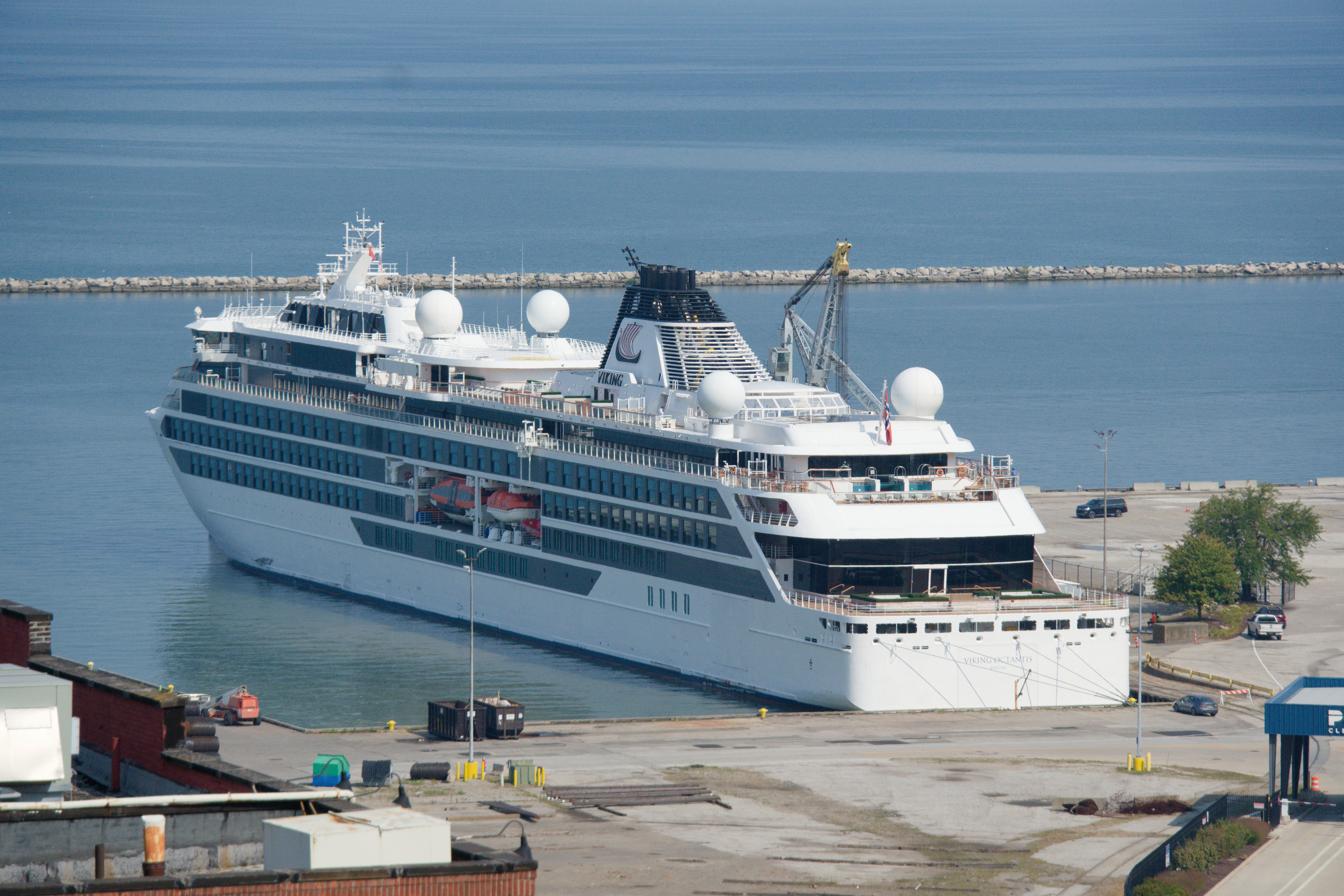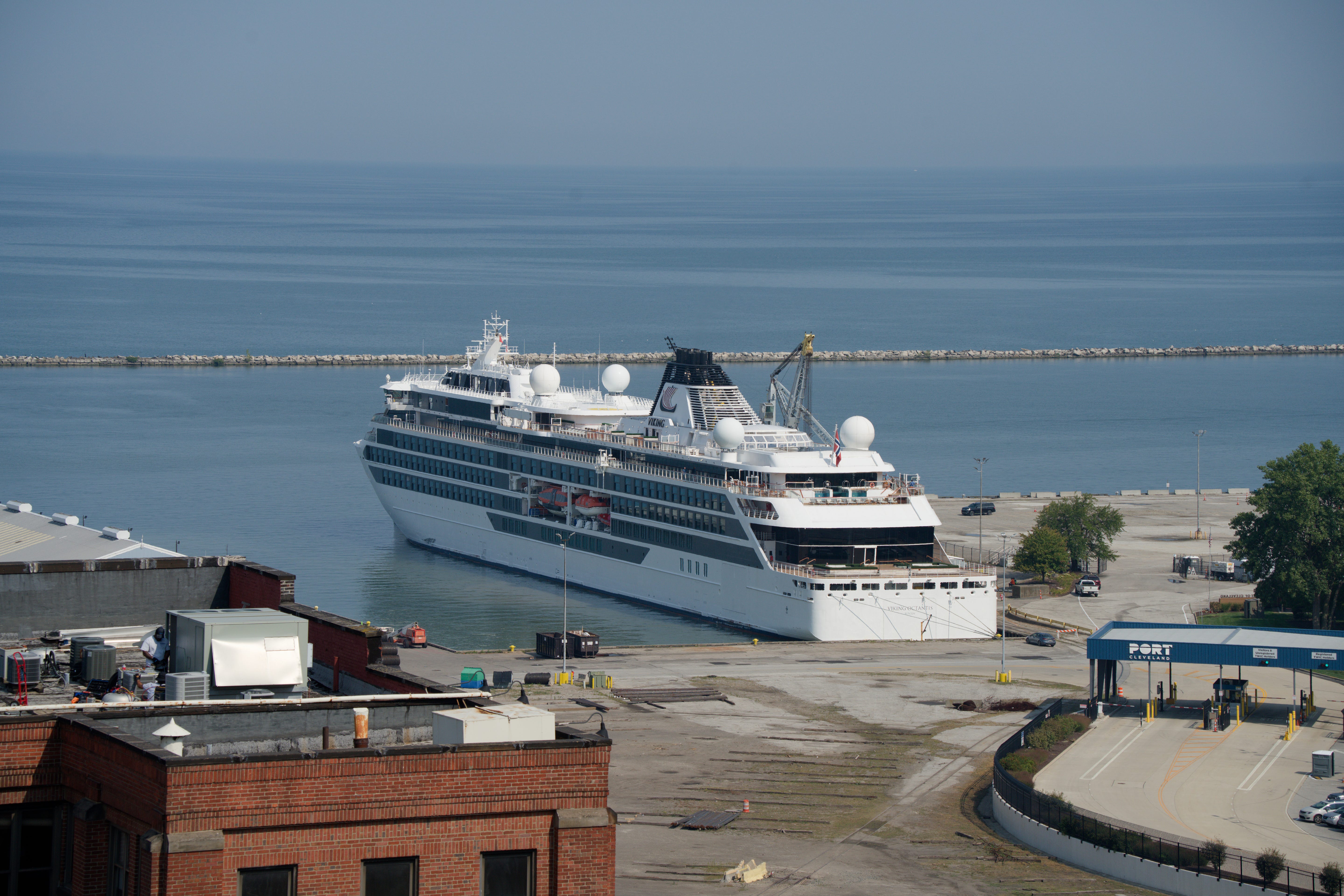My simple answer is both.
A full-frame camera has a sensor the same size as a 35 mm film frame. As the industry transitioned from Single Lens Reflex (SLR) Cameras to Digital SLR (DSLR) camera, it made sense to reuse highly refined SLR technology in high end digital cameras. Manufacturers could use similar bodies, the same “through the lens” view finder, the same auto focus systems, and, most importantly, support the same lenses. Really, the only difference between an SLR and a DSLR was the back where a digital sensor replaced a segment of a roll of film. In fact, the top-end Phase One medium format cameras offer digital and film backs.
But consumer level cameras that had used 35 mm film were replaced by digital cameras that used smaller sensors. In the 1980s my wife bought a Nikon point and shoot camera to take on a trip to India, She wanted something a chimpanzee could operate and she was recommended a little Nikon camera. It did a great job for the times. Here is a shot she took of the Taj Mahal.
She shot slides, which turned out to be a great decision, because they provide better quality than consumer level prints. I photographed her slide to create this photo.
The reasons why 35mm digital sensors never appeared in consumer level cameras were mostly due to cost and the extra electronics needed. So manufacturers produced point-and-shoot cameras that used small sensors, such the cameras I started out with, and DSLR cameras that used sensors smaller than full-frame 35 sensors. The most widely used sensor size is APS-C followed by MFT and then 1”. APS-C stands for Advanced Photo System type-C and is also based on a standard film format called Advanced Photo System that is used for cameras and movie cameras shooting Super-35 motion film format.
The sensor size determines the minimum size of the camera lens since a lens has to project the scene onto the sensor, just as it had to project the light coming in through the lens onto a piece of film.
An interchangeable lens has to be mated to the camera body. The interface is called a mount and, unfortunately, camera makers each designed their own mounts. This meant you couldn’t use a Canon lens on a Nikon camera and so on. However, the makers did use the same mount for their full-frame and APS-C cameras but they split their lens lines into cheaper APS-C lens and dearer full-frame lenses. The difference is that an APS-C lens only has to project light onto a 370mm² area, and can thus use smaller elements. You can use full-frame lenses on an APS-C camera and there are good reasons to do so. You can also mount APS-C lenses on a full-frame camera but the image will be cropped to fit an APS-C sensor area. Most full-frame cameras have a crop-mode setting so the cropping is done in the camera, That’s why APS-C cameras are sometimes referred to as “crop-sensor” cameras.
You may hear the term “crop factor” in discussions about sensor sizes. The crop factor is determined by the ratio of a sensor size to a 35mm or full-frame sensor. For an APS-C sensor, the crop factor is 1.5. If I shoot a scene using a 50mm lens on a crop-sensor camera, I would get a image the same size as I would using a 75mm lens on a full-frame camera. Some people say this means that an APS-C camera “has more reach” than a full-frame camera. I’ve even heard people with a full frame camera and a 600mm zoom say they shoot in APS-C mode because they get more reach and its like having a 900mm lens. What they are really doing is throwing away pixels outside of a 23.6x15.7mm rectangle on their 26mmx24mm sensor. OTOH, if your full frame camera has a 24megapixel (mp) sensor and your APS-C camera also has a 24mp sensor, then the APS-C camera will produce more detailed images than you’d get using the APS-C lens on your full frame camera, all else being equal.
I have a Sony A6700 APS-C camera with a 26mp sensor and a Sony A7CR full-frame camera with a 60mp sensor. I shot the same subject with the same APS-C zoom lens on both cameras, with the A7CR using APS-C mode. Both images came out at almost exactly the same size. I then shot the same scene using a full-frame zoom lens on both cameras at about the same focal length. The only real difference between the two images is that the full frame sensor captured more of the scene. So, taking the cheapest combination - the A6700 with the Tamron 18-300mm APS_C zoom, and the most expensive, the A7CR with the Tamron 50-400mm zoom, I couldn't see any significant difference in image quality at 200% zoom on my monitor. Here are those two images
If you crop the second image to match the first, you’d be hard-pressed to tell which image came from which camera, even though the settings are different.
So, why would you bother to spend the extra money on full frame just to get more pixels? These are the primary reasons:
1. Full frame cameras usually have more megapixels so you can get better image quality from having more megapixels.
2. They usually have better dynamic range, and better low-light performance, so you can shoot at higher ISOs. But, these days, with advances in software noise reduction, you can still shoot at ridiculous ISO settings on an APS-C camera.
3. If you are shooting landscapes, you will be able to capture more of a scene at the same focal length with less distortion.
4. If shallow depth of field is important to your style of photography, then full frame gives you a shallower depth of field. For bird photography, that can be a curse because you’ll often get the head in focus and the tail out of focus.
5. Full frame lenses are usually higher quality than APS-C lenses, but you will be paying a lot more for them.
6. You can zoom by cropping if you have a high megapixel camera.
The advantages of going with APS-C are:
1. Smaller form factor for the body and lens, so it is better for travel and walk-around photography.
2. Lower cost.
3. Only marginally inferior in quality in most situations.
4. Able to use full-fame and APS-C lenses effectively.
If I’m going out to shoot for a specific purpose, I’ll usually take my A7CR. If I’m travelling, or just walking around town shooting casually, then I’ll pick the A6700. I like having the choice. Truth be told, I like having more gear to play with.







